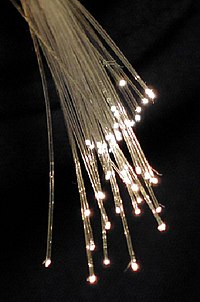
Photo from wikipedia
Metamaterials are a class of man-made composites that can realize extraordinary wave phenomena and can be designed through exploiting anisotropy of elastic media. Anisotropy, as is known, is also an… Click to show full abstract
Metamaterials are a class of man-made composites that can realize extraordinary wave phenomena and can be designed through exploiting anisotropy of elastic media. Anisotropy, as is known, is also an inherent characteristic of classical composites. Therefore, there is a great potential that the anisotropy of classical composites can be utilized to achieve extraordinary manipulation of elastic waves. To this end, we propose a concept of fiber-reinforced composite metamaterials, which attains extraordinary wave properties with rationally designed ply angles. Specifically, we consider the phenomenon of transmodal Fabry–Perot interference. This phenomenon, which can transfer wave energy between longitudinal and transverse modes solely and maximally, requires that the interferometer should attain unique anisotropy. Based on the transmodal interference theory and the classical lamination theory, the composite metamaterials are designed and validated numerically and experimentally. We note that the base material properties of each layer can significantly affect the metamaterial design, and an anisotropy index is introduced to investigate the effects. Our work broadens the applications of classical composites and offers a new way to design metamaterials.
Journal Title: Journal of Physics D: Applied Physics
Year Published: 2021
Link to full text (if available)
Share on Social Media: Sign Up to like & get
recommendations!